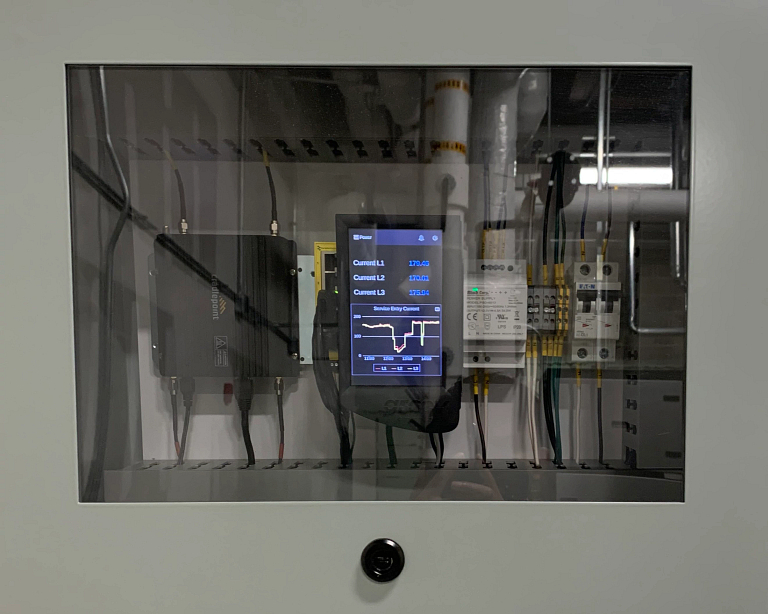Indiana University researchers are using artificial intelligence and machine learning to help small and mid-sized Indiana manufacturers lower their carbon footprints and train students for careers in the emerging field of energy analytics.

Faculty in the IU Luddy School of Informatics, Computing and Engineering at IU Bloomington and the School of Engineering and Technology at IUPUI will develop advanced manufacturing data models and analytics applications that will recommend processes and protocols to manufacturing companies so they can reduce their energy consumption -- increasing factory efficiency and enhancing sustainability.
"Currently, over 95% of Indiana manufacturers do not have analytics to correlate their energy usage with factory assembly lines, machines, shifts, operator usage patterns and more," said Raj Acharya, associate vice president for research and AI innovation at IU, the John H. Rudy Professor of Computing, Engineering and Informatics at the Luddy School and principal investigator on the project. "This understanding, coupled with solutions to detected problems, will allow manufacturers to immediately see the improvement in their energy usage processes."
The researchers will also create educational resources, including a raw data repository and new curricula, and work alongside students to provide them with hands-on experience in developing and implementing analytics models to evaluate energy data.
A cross-disciplinary collaboration

The project is a collaboration among Indiana's top research universities -- IU, Purdue University and the University of Notre Dame -- along with industry and nonprofit partners Amazon Web Services, Conexus Indiana, Energy Systems Network and the Emerging Manufacturing Collaboration Center, which is located in Indianapolis' 16 Tech Innovation District.
These partners are brought together by two concurrent programs:
- AnalytiXIN, an initiative facilitated by the Central Indiana Corporate Partnership to develop a digital community, including a place-focused collaboration hub in Indianapolis, that will strengthen connections and encourage engagement of academic data science research and development talent with their industry peers to drive sustained innovation within Indiana.
- Energy INsights, which helps participating Indiana manufacturers integrate an Amazon Web Services-connected platform, cutting-edge computer and sensor hardware, and AI and data science software tools to optimize energy efficiency at their factories.
Researchers at IU, Purdue and Notre Dame will work closely to collect and analyze data gathered from Energy INsights and university testbeds to develop applications and a raw data repository, or a "data lake," for use by the broader industry, research and education communities. The researchers will package their apps into customizable assets on the Amazon Web Services cloud, where they'll be available to manufacturers.
Leveraging IU expertise

Vikram Jadhao, associate professor of intelligent systems engineering at the Luddy School and co-principal investigator on the project, said the three universities will also work separately to put their own unique spin on the applications they develop, based on the expertise of their faculty.
At IU, researchers bring together a variety of interdisciplinary experience, particularly in the Luddy School's Department of Intelligent Systems Engineering, which was founded in 2016. The department connects faculty experts in artificial intelligence, machine learning, data science, modeling and simulation, cloud computing, and more.
"We are probably the first institution in the world where engineering is viewed through the lens of artificial intelligence and computing," Jadhao said.
The Luddy School is also home to the Fibers and Additive Manufacturing Enabled Systems Laboratory, directed by Alexander Gumennik, an assistant professor of intelligent systems engineering in the school. The state-of-art lab consists of approximately 3,000 square feet of clean rooms, optical laboratories and manufacturing facilities with innovative highly customized equipment. This is where IU researchers plan to test and calibrate their energy analytics applications for the project.
"Our university's role in this one-of-a-kind project speaks to the world-class quality of the informatics, computing and engineering research program that we've built at IU," IU Vice President for Research Fred H. Cate said. "This is a great example of how IU faculty and students are working at the forefront of emerging fields of research to help make Indiana a better place to live and work."
Training the workforce of the future
Although much AI research has been applied to health and health care, Acharya said this is one of the first research projects to combine the fields of energy, AI and manufacturing.
"No single curriculum currently offers this diverse set of training disciplines, presenting both a challenge and a unique opportunity," Acharya said. "As part of this effort, we will create a unique training and education curriculum at the intersection of engineering, computer science, AI, machine learning and technology."
In addition to building industry tools, IU will develop extensive education and training materials, including lectures, tutorials, lab environments, training exercises and high-fidelity simulations of energy-saving solutions in practice. The project will also offer extensive hands-on experience and industry internship opportunities for undergraduate and graduate students at IU.
Luddy School student Anisha Bajaj, who is pursuing a master's degree in data science, said the project will be a good learning opportunity.
"I am very excited about working on the project," Bajaj said. "We are trying to predict future energy consumption for small-scale industries, and, using the prediction, we will try to recommend actions to save energy. This will help further my career goals by providing a real-world experience of applying my AI and machine-learning knowledge to a tangible problem."
The two-year project is already underway, with IU researchers setting up manufacturing testbeds on campus.
Additional IU Bloomington and IUPUI faculty involved in the project include Ariful Azad, Prateek Sharma, Euzeli Cipriano Dos Santos and Travis Brown.






